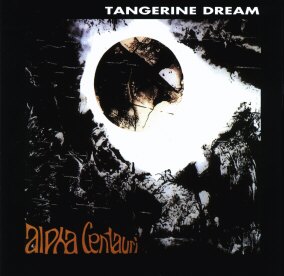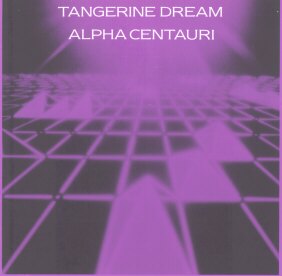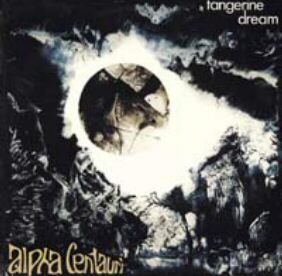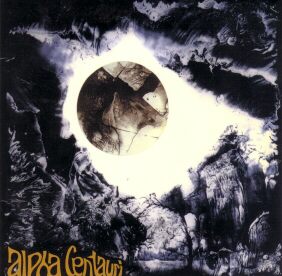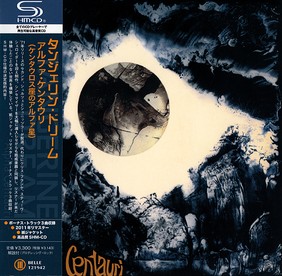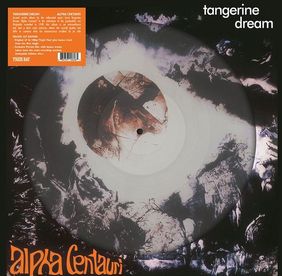 |  | |||||||||||||||||||||
Tangerine Dream Alpha Centauri- Studio, released March 1971 - | |||||||||||||||||||||||||||||||||||||||||||||||||||||||||||||||||||||||||||||||||||||||||||||||||||||||||||||||||||||||||||||||||||||||||||||||||||||||||||||||||||||||||||||||||||
Covers |
| ||||||||||||||||||||||||||||||||||||||||||||||||||||||||||||||||||||||||||||||||||||||||||||||||||||||||||||||||||||||||||||||||||||||||||||||||||||||||||||||||||||||||||||||||||
Tracks |
| ||||||||||||||||||||||||||||||||||||||||||||||||||||||||||||||||||||||||||||||||||||||||||||||||||||||||||||||||||||||||||||||||||||||||||||||||||||||||||||||||||||||||||||||||||
Details |
| ||||||||||||||||||||||||||||||||||||||||||||||||||||||||||||||||||||||||||||||||||||||||||||||||||||||||||||||||||||||||||||||||||||||||||||||||||||||||||||||||||||||||||||||||||
Notes | In October 1970 Edgar Froese had been asked by a friend to co-produce the German version of the Simon and Garfunkel song "The Boxer" for a German artist. He still did some of these "bread and butter" jobs at that period of time and was looking for a good drummer after Klaus Schulze had left the group. During that recording session, Edgar Froese met Chris Franke, a drummer who had just turned 17 and whose drumming was unusually varied. Edgar hired him for various studio jobs before he asked him if he wanted to play with TD. | ||||||||||||||||||||||||||||||||||||||||||||||||||||||||||||||||||||||||||||||||||||||||||||||||||||||||||||||||||||||||||||||||||||||||||||||||||||||||||||||||||||||||||||||||||
Chris Franke: "At the time I met Edgar, my group Agitation Free was falling apart. He was in a transition at that time, too. Tangerine Dream had fallen apart because Klaus Schulze and Conrad Schnitzler had just left the group. Edgar and I understood each other very well from the beginning. He and I were very interested in working together because both of us wanted to get away from written music. We wanted to make long songs and improvise. Horizons opened for us -- not only in classical and electronic, but also via East Indian and African music. It was an eye-opener. When I decided to play with Edgar, I waved my education goodbye. From this time on, I must say, I worked as a professional musician. I was about seventeen and my parents had to sign my first record contract. Edgar is nine years older than me, so that made some things interesting." | |||||||||||||||||||||||||||||||||||||||||||||||||||||||||||||||||||||||||||||||||||||||||||||||||||||||||||||||||||||||||||||||||||||||||||||||||||||||||||||||||||||||||||||||||||
Edgar Froese about the leaving of Klaus Schulze: "His wife was leading him away from the group, so we said if you get married you leave the group -- he couldn't do both. Then after one year he got divorced and went back to music again. By that time we had a new drummer." (Interview with Neumusik, January 1980) | |||||||||||||||||||||||||||||||||||||||||||||||||||||||||||||||||||||||||||||||||||||||||||||||||||||||||||||||||||||||||||||||||||||||||||||||||||||||||||||||||||||||||||||||||||
The line-up Edgar Froese/Chris Franke/Conrad Schnitzler gave many concerts and TV appearances, since their music was considered very exotic at that time. TD gave a TV concert for twelve pinball machines, guitar, cello and drums -- it was a live TV broadcast and caused a wave of public protest. In spite of this, TD was well booked at home and abroad, though there are no album releases with this line-up. | |||||||||||||||||||||||||||||||||||||||||||||||||||||||||||||||||||||||||||||||||||||||||||||||||||||||||||||||||||||||||||||||||||||||||||||||||||||||||||||||||||||||||||||||||||
In 1980, Conrad Schnitzler told about the relationship between him and the other band members: "Sometimes we did fantastic things, but they were playing against me. Klaus Schulze didn't know anything about the music. I was older than him, and Edgar was in-between. I found it better with Franke than with Klaus, because Franke was very interested." (Interview with Neumusik, January 1980) | |||||||||||||||||||||||||||||||||||||||||||||||||||||||||||||||||||||||||||||||||||||||||||||||||||||||||||||||||||||||||||||||||||||||||||||||||||||||||||||||||||||||||||||||||||
After Conrad Schnitzler had left the group he was replaced by Steve Schroyder. Edgar Froese: "He came from somewhere in Spain or the south of France, and was passing through Berlin, and just dropped by to say hello -- then went again." (Interview with Neumusik, January 1980) | |||||||||||||||||||||||||||||||||||||||||||||||||||||||||||||||||||||||||||||||||||||||||||||||||||||||||||||||||||||||||||||||||||||||||||||||||||||||||||||||||||||||||||||||||||
For their second album, Alpha Centauri, TD experimented for over three weeks making their original organ sound, that was pure luxury in those days. The spacey image of the music began during these years. | |||||||||||||||||||||||||||||||||||||||||||||||||||||||||||||||||||||||||||||||||||||||||||||||||||||||||||||||||||||||||||||||||||||||||||||||||||||||||||||||||||||||||||||||||||
In 1982 TD became famous for their TV score for an episode of the German thriller series 'Tatort' (featured on the single release Das Mädchen auf der Treppe), but they already provided thriller music for the German series 'Der Kommissar' back in 1973: the episode 'Sonderbare Vorfälle im Hause von Prof. S.' ('Strange incidents at the house of Professor S.') featured some clips of Alpha Centauri. | |||||||||||||||||||||||||||||||||||||||||||||||||||||||||||||||||||||||||||||||||||||||||||||||||||||||||||||||||||||||||||||||||||||||||||||||||||||||||||||||||||||||||||||||||||
Re-Releases | |||||||||||||||||||||||||||||||||||||||||||||||||||||||||||||||||||||||||||||||||||||||||||||||||||||||||||||||||||||||||||||||||||||||||||||||||||||||||||||||||||||||||||||||||||
In 1987 Alpha Centauri was released on CD for the first time. While the USA release featured the reworked original cover artwork, the UK release had a total different cover design, originating from the boxed set In The Beginning. | |||||||||||||||||||||||||||||||||||||||||||||||||||||||||||||||||||||||||||||||||||||||||||||||||||||||||||||||||||||||||||||||||||||||||||||||||||||||||||||||||||||||||||||||||||
Nine years later, in 1996, the CD was re-released again. The clear sound of this CD made the careful remastering of the original tapes very evident compared to the earlier CD releases. The cover artwork was very similar to the original LP cover. The CD booklet features sleeve notes taken from the book "Krautrocksampler" by Julian Cope. | |||||||||||||||||||||||||||||||||||||||||||||||||||||||||||||||||||||||||||||||||||||||||||||||||||||||||||||||||||||||||||||||||||||||||||||||||||||||||||||||||||||||||||||||||||
The CD was re-released in 2002 with a slightly different cover artwork and a remixed version of the rare bonus track Ultima Thule, Part One, that originally appeared on the single release Ultima Thule (1971) and was released officially on CD for the first time on Antique Dreams (2000). Unfortunately, the record company did not decide to add the B-side of the single as a bonus track, too, as Ultima Thule, Part Two had not been released on any official CD at that time. | |||||||||||||||||||||||||||||||||||||||||||||||||||||||||||||||||||||||||||||||||||||||||||||||||||||||||||||||||||||||||||||||||||||||||||||||||||||||||||||||||||||||||||||||||||
In 2004 the album was re-released in Japan with a cardboard sleeve featuring the exact replica of the original LP sleeves, and, as bonus, the complete Ultima Thule single as 3-inch CD in an extra paper sleeve. | |||||||||||||||||||||||||||||||||||||||||||||||||||||||||||||||||||||||||||||||||||||||||||||||||||||||||||||||||||||||||||||||||||||||||||||||||||||||||||||||||||||||||||||||||||
In October 2011 the British Esoteric Records re-released Alpha Centauri as part of a re-issue of the TD back catalogue of the Pink and Blue Years. Like all other re-releases of the Esoteric series, the disc comes nicely packaged with a 16-page booklet, featuring the original artwork, credits, numerous photos and an (as usually) highly informative and well-written essay by Andy King. This release comes with even three bonus tracks -- besides both sides of the Ultima Thule single it features the rare Oszillator Planet Concert -- making this album version the very first official CD release of this track 40 years after its initial appearance on the compilation Ossiach Live (1971). The latter track was mastered from an off air (pre-FM) tape made for broadcast. | |||||||||||||||||||||||||||||||||||||||||||||||||||||||||||||||||||||||||||||||||||||||||||||||||||||||||||||||||||||||||||||||||||||||||||||||||||||||||||||||||||||||||||||||||||
In April 2012 the Japanese company Belle Antique re-released the remastered Esoteric version of Alpha Centauri as SHM-CD (Super High Material CD), including the bonus tracks. | |||||||||||||||||||||||||||||||||||||||||||||||||||||||||||||||||||||||||||||||||||||||||||||||||||||||||||||||||||||||||||||||||||||||||||||||||||||||||||||||||||||||||||||||||||
In late July 2012 a limited edition gatefold vinyl release was issued by Esoteric Records. It features the fully restored replica of the original Ohr records gate-fold album. The inner sleeve features photos and essay. This version has the original track list, that is, it comes without any bonus tracks. | |||||||||||||||||||||||||||||||||||||||||||||||||||||||||||||||||||||||||||||||||||||||||||||||||||||||||||||||||||||||||||||||||||||||||||||||||||||||||||||||||||||||||||||||||||
Another re-release on vinyl was issued in summer 2017, consisting of the album on 180g vinyl (with Ultima Thule, Part One as bonus track) plus a 45rpm picture disc "with bonus tracks taken from the same recording sessions", which, of course, is not true, as it features Ultima Thule, Part Two and Oszillator Planet Concert once more. | |||||||||||||||||||||||||||||||||||||||||||||||||||||||||||||||||||||||||||||||||||||||||||||||||||||||||||||||||||||||||||||||||||||||||||||||||||||||||||||||||||||||||||||||||||
Releases |
| ||||||||||||||||||||||||||||||||||||||||||||||||||||||||||||||||||||||||||||||||||||||||||||||||||||||||||||||||||||||||||||||||||||||||||||||||||||||||||||||||||||||||||||||||||
Copyright/Disclaimer © 2001-2025 by Michael Berling. Last Update: 2025-01-03 17:20 |

